Contents
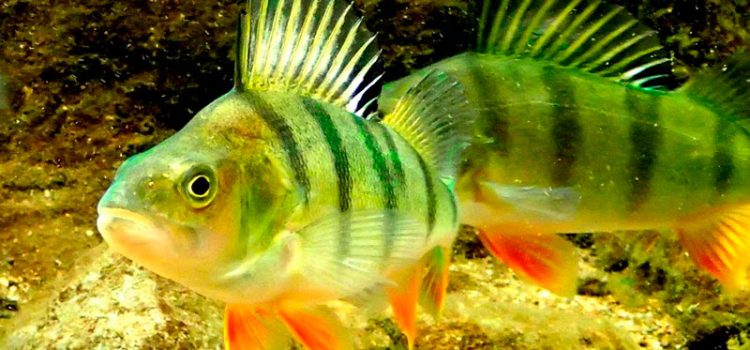
Perch is a predatory fish that belongs to the class of ray-finned fish species and represents the perch-like order, the perch family.
Perch: description
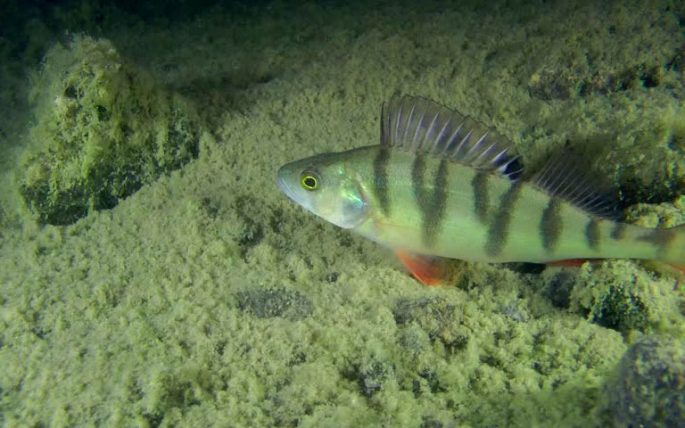
A characteristic feature of this species of fish is the structure and shape of the dorsal fin. It consists of two parts. The front is more prickly, while the back is usually soft. In some species of fish, this fin is integral. The anal fin contains several (up to 3) hard spines, and the caudal fin has a specific notch. In almost all representatives of this family, the ventral fins have a pink or bright red hue. The perch’s mouth is large, as are the large teeth, which are arranged in several rows. Some representatives of this class are distinguished by the presence of fangs. This predator has rather small scales, which adheres securely to the skin, and there is a ridge on the rear edges, on which small spikes and teeth are visible. There are numerous small notches on the gill cover.
Perch grows to a size of 3 kg, and its average weight is in the range of 0,4 kg. The weight of a sea bass can be about 14 kilograms. The length of the predator is about 1 meter, or even more, but the average individuals reach a length of no more than 45 cm. Perch is included in the diet of humans, otters, herons and other predatory, larger fish.
perch coloring page
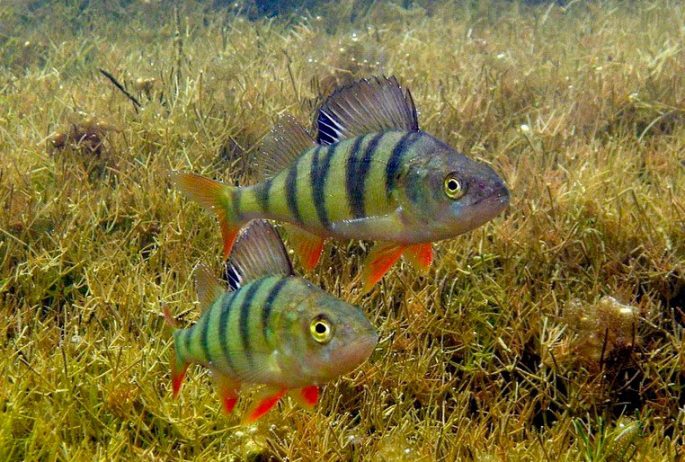
The color of the perch depends on what species it belongs to, so it can be yellow-green or gray-green. Sea bass has slightly different colors, such as pink or red, although there are instances of yellowish or bluish hues. Deep-sea species tend to have large eyes.
Types of perch with photo

The perch family includes at least 100 species of fish, which are distributed among 9 genera. The most famous for our anglers are 4 species:
- River perch. It lives in almost all reservoirs with fresh water, therefore it is considered the most common species.
- perch yellow differs in that its tail, fins and scales are colored yellow.
- Perch Balkhash. It lacks a black dot on its first dorsal fin, and adults lack vertical stripes.
- Sea bass. In this species of perch, all fins have poisonous glands.
- sun perch. The sun perch was first brought to Russia in 1965. Their homeland is North America.
Habitat

This type of fish inhabits almost all natural and artificial reservoirs of the Northern Hemisphere, which includes rivers and lakes in the USA and Canada, as well as reservoirs of Eurasia. The perch feels comfortable in the presence of a slight current, not great depths, as well as aquatic vegetation, where the perch prefers to hunt for small fish. As a rule, the perch gathers in a few flocks and leads an active lifestyle, both day and night. Interestingly, the perch also hunts in packs. Perch is found in highlands, as well as at depths up to 150 meters.
Sea perch leads an active lifestyle both in the coastal zone, in thickets of aquatic vegetation, and at a considerable distance from the coast on a rocky bottom.
Perch diet
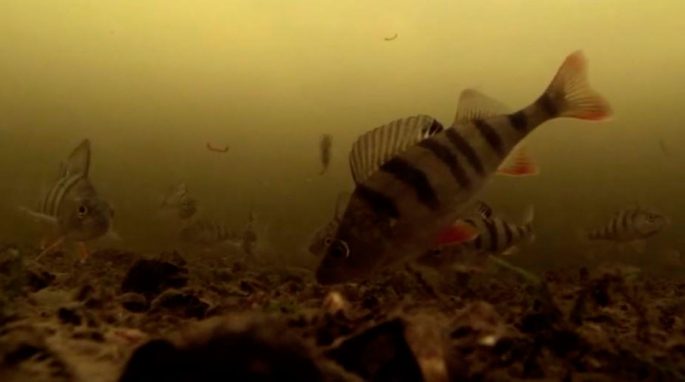
The perch is such a voracious predator that it eats everything that moves, both in the water column and at the bottom of the reservoir. Most importantly, perch can easily destroy the eggs laid by other fish. When perch fry are born, they stay closer to the bottom, where they feed on small living organisms. Already by the middle of summer they move to the coastal zone, where they hunt for fry of roach and other small fish.
Perch prefer low-value fish species such as smelt and minnow. In second place at the perch are ruffs, gobies, bleak, juvenile silver bream, as well as a trifle of pike perch and crucian carp. Often the perch preys on the larvae of mosquitoes, crayfish and frogs. Sometimes stones and algae can be found in the stomach of this predator. Scientists believe that the perch swallows them to normalize the digestive processes.
With the advent of autumn, when perch, and other types of fish, have zhor, perches easily eat their relatives. This fact leads to a decrease in the predator population, but at the same time, peaceful fish have a chance to survive.
Perch description, lifestyle
perch breeding
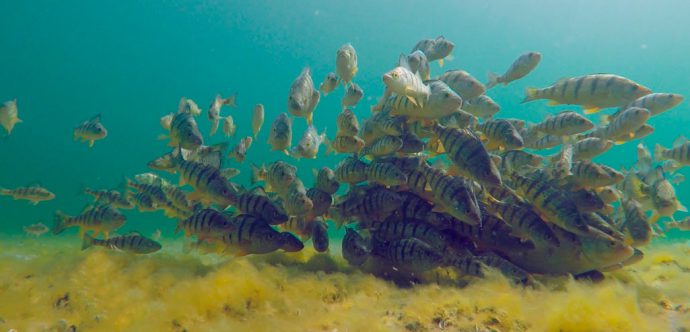
In the second or third year of life, depending on the living conditions, the perch becomes a sexually mature predator. Before the start of spawning, striped robbers gather in numerous flocks and go to the shallow water to spawn. In spawning areas, there should be a slight current, and the water temperature should reach 7 to 15 degrees plus. Fertilized eggs are attached to underwater natural or artificial objects, as well as to the roots of coastal vegetation. The masonry resembles a garland, up to a meter long, in which there are up to 800 thousand eggs. After 20-25 days, perch fry are born from the eggs, which at first feed on plankton. They become predators when they grow up to 10 cm in length. Marine subspecies of perch are viviparous fish, that is, they do not spawn, but fry. During the spawning period, the female releases up to 2 million fry, which rise closer to the surface and begin to feed in the same way as freshwater perch fry.
Artificial perch breeding
Perch fish has excellent taste characteristics, therefore, especially recently, there has been a trend of artificial breeding of this fish. Unfortunately, this method of rearing has a number of problems, since it is necessary to have special equipment, clean water, and small fish, which serve as a natural food for perch.
Interesting Perch Facts
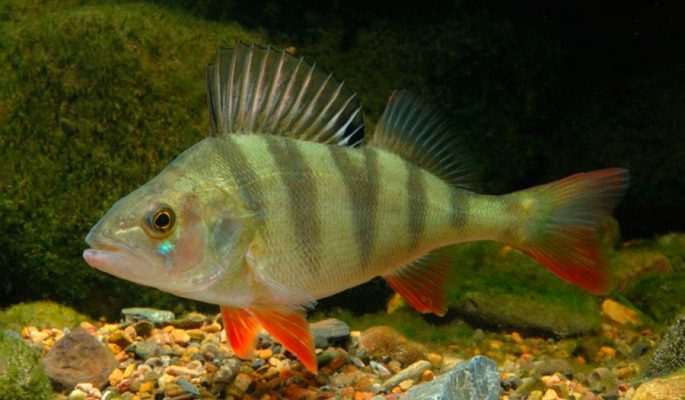
- Any avid angler can say with confidence that perch always brings the most consistent catch, both in summer and winter. This indicates that the perch is so gluttonous that at any time of the year it bites on any bait, and it is stable.
- A large perch (trophy) is much more difficult to catch, since it keeps at depth and leads an isolated lifestyle.
- Perch can live in completely different conditions, both in rivers, in ponds and lakes, as well as in low-salt water bodies.
- This predator, due to its great promiscuity for food, is able to destroy large populations of peaceful fish. Pike perch, trout, carp and other fish suffer from the presence of perch.
- The average size of the striped robber is within 350 grams, although it is known that in 1945 a specimen weighing 6 kg was caught in England.
- Sea bass lives mainly in the waters of the Pacific Ocean and can reach a length of more than 1 meter and gain up to 15 kg of weight. Sea bass meat is extremely useful because it contains protein, taurine and a lot of other useful components.
- Viviparous fish bring extremely small offspring, compared with sea bass, which produces up to 2 million fry.
- Hot smoked perch was considered a favorite seafood in Soviet times. Due to the regular excess of permissible catch rates, perch has become a delicacy in our time.
Perch fishing is an interesting and exciting activity at any time of the year. The only problem is that it is problematic to clean the perch because of the rather small scales that are securely held on the skin. It is especially problematic to clean small perch, so people have come up with a lot of ways that make this process easier. If the perch is dipped in boiling water and held for a few seconds, then the skin is easily removed along with the scales. In any case, you need to experiment.
Be that as it may, you can always catch a perch, which always cheers up the angler.
5 secrets of PERCH CATCHING ✔️ How to FIND and CATCH PERCH









